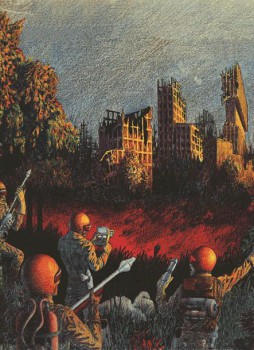Ancient Worlds: I Think This Book’s Mostly Filler…
![]() Have you ever sat down to read a book and hit a stretch in which it seems really obvious that the writer is writing because… well, they have to? That something is eventually going to happen, but it can’t happen just yet because word count? Or, in all fairness to authors, because it just isn’t time yet, because time has to pass between events. Emotional distance has to be gained or events will appear too closely related if they are too closely linked in the text.
Have you ever sat down to read a book and hit a stretch in which it seems really obvious that the writer is writing because… well, they have to? That something is eventually going to happen, but it can’t happen just yet because word count? Or, in all fairness to authors, because it just isn’t time yet, because time has to pass between events. Emotional distance has to be gained or events will appear too closely related if they are too closely linked in the text.
It happens around page 150 in most genre novels, or right around episodes 16-18 in a 22 episode TV series. And let’s be kind to filler: not every piece of a story can move the overall arc forward (although it’s great when it does). It can be an excellent opportunity for character growth and for world-building. It can provide needed relief from a heavy plotlines. And it can just let the writer(s) play, with occasionally great storytelling popping up. “Hush” in Buffy is a great example, as is “Big Block of Cheese Day” on West Wing or “Houses of the Holy” on Supernatural.
And sometimes you just get… Book 2 of the Argonautica. Feel free to disagree with me if you’ve read it (and I expect to see a good many comments arguing with me!) (or a loud chirping chorus of crickets. Yeah, it’ll probably be crickets), but between the action in Book 1 and Book 3’s massive operatic scope, Book 2 is just… there.








